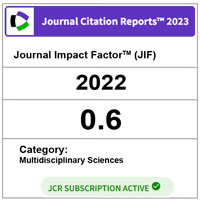EEG analysis on human reflection towards relaxation of mind
DOI:
https://doi.org/10.11113/mjfas.v15n2.1103Keywords:
Human emotion, EEG, alpha wavesAbstract
This paper presents an interdisciplinary studies of electronic systems: engineering, psychology and neuro-cognition. It evaluates the neurophysiological activities of human emotion using electroencephalography (EEG). This study is aimed to classify a comparison of Electroencephalogram (EEG) signal to observe human reflection towards relaxation state of mind during divine Quran recitation and listening to music. The objectives of this study is to measure the changes in alpha band and prove that the brain is less active when the subject is listening to Quran compared to music. Six healthy subjects were recruited to measure their behaviors of the mind for a total duration of three minutes. We have highlighted the observation in Topographic Map of the brain through ERP Analysis to observe whether the brain experience any changes. The results showed that the brain activity is less active and the Alpha Power is higher when the subject is listening to Quran Recitation. We conclude that listening to Quran Recitation is a useful tool for a healthy and happy mind which can help people recognize the need of Islamic practice in human life.
References
Abdullah, A. A., Omar, Z. (2011). The effect of temporal EEG signals while listening to quran recitation. International Journal on Advanced Science, Engineering and Information Technology, 1(4), 372-375.
Amin H.U., Malik A.S., Badruddin N., Chooi WT. (2014). Brain behavior in learning and memory recall process: A high-resolution EEG analysis. In: Goh, J. (eds). The 15th International Conference on Biomedical Engineering. IFMBE Proceedings, 43, Springer, Cham.
Azizi, S. A. (2009). Brain to music to brain! Neuroscience letters, 459(1), 1-2. Boutros, N.N. (2013). Standard EEG: A research roadmap for neuropsychiatry. USA: Springer.
Cahn, B. R., Polich, J. 2006. Meditation states and traits: EEG, ERP, and neuroimaging studies. Psychological Bulletin, 132 (2), 180.
Chen, A., Zhao, H. (2008). EEG default mode network: Mood modulation(happy–sad) in chinese music (butterfly lovers, violin concerto). International Journal of Psychophysiology, 69 (3), 185.
Davidson, R. J. (1988). EEG measures of cerebral asymmetry: Conceptual and methodological issues. International Journal of Neuroscience, 39, 71-89.
Davidson, R. J., Ekman, P., Saron, C. D., Senulis, J. A., & Friesen, W. V. (1990). Approach-withdrawal and cerebral asymmetry: Emotional expression and brain physiology: I. Journal of Personality and Social Psychology, 58(2), 330-341.
Davidson, R. J., Hugdahl, K. (2002). The asymmetrical brain. Bradford Books, the MIT Press. De la Torre-Gea, Guillermo & Garcia-Manzo, G. (2016). Determination of patterns in the EEG signals during relaxation through music using bayesian networks. International Multispecialty Journal of Health. 2(11), 1 - 7.
Gilman, N. V. (2015). Analysis for science librarians of the 2014 nobel prize in physiology or medicine: The life and work of john o’keefe, edvard moser, and may-britt moser. Science & Technology Libraries, 34(1), 1-18.
Johnson, G. (1998). Traumatic brain injury survival guide. Retrieved from https://www.google.com/search?q=Traumatic+brain+injury+survival+guide%3A&oq=Traumatic+brain+injury+survival+guide%3A&aqs=chrome..69i57j0.597j0j4&sourceid=chrome&ie=UTF-8
Kahn, B. (2005). Electroencephalogram (EEG) signal processing, wave identification, and emotion recognition. California State University, Northridge, United States.
Key, A. P. & Crowley, M. J. (2012). Introduction to the special issue on EEG/ERP data analysis: Novel approaches for modern data sets. Developmental Neuropsychology, 37(6), 473-475.
McDermott, J. H. (2012). Auditory preferences and aesthetics: Music, voices, and everyday sounds. In R. J. Dolan & T. Sharot (Eds.), Neuroscience of preference and choice: Cognitive and neural mechanisms (pp. 27-256). San Diego, CA: Elsevier Academic Press.
Sammler, D., Grigutsch, M., Thomas Fritz, T., Koelsch, S. (2007). Music and emotion: electrophysiological correlates of the processing of pleasant and unpleasant music. Psychophysiology,44(2), 293-304.
Schmidt, L. A., & Trainor, L. J. (2001). Frontal brain electrical activity (EEG) distinguishes valence and intensity of musical emotions. Cognition and Emotion, 15(4), 487-500.
Shekha, M. S., Hassan, A. O., Othman, S. A. (2013). Effects of quran listening and music on electroencephalogram brain waves. The Egyptian Journal of Experimental Biology (Zoology), 9(1), 119-121.
Trainor, L. (2008). Science & music: The neural roots of music. Nature, 453, 598-599.
Zhang, H., Hussain, A., Liu, D., Wang, Z. (Eds.). (2012). Advances in brain inspired cognitive systems. 5th International Conference, BICS 2012, Shenyang, China, July 11-14, 2012. Proceedings. Springer.







